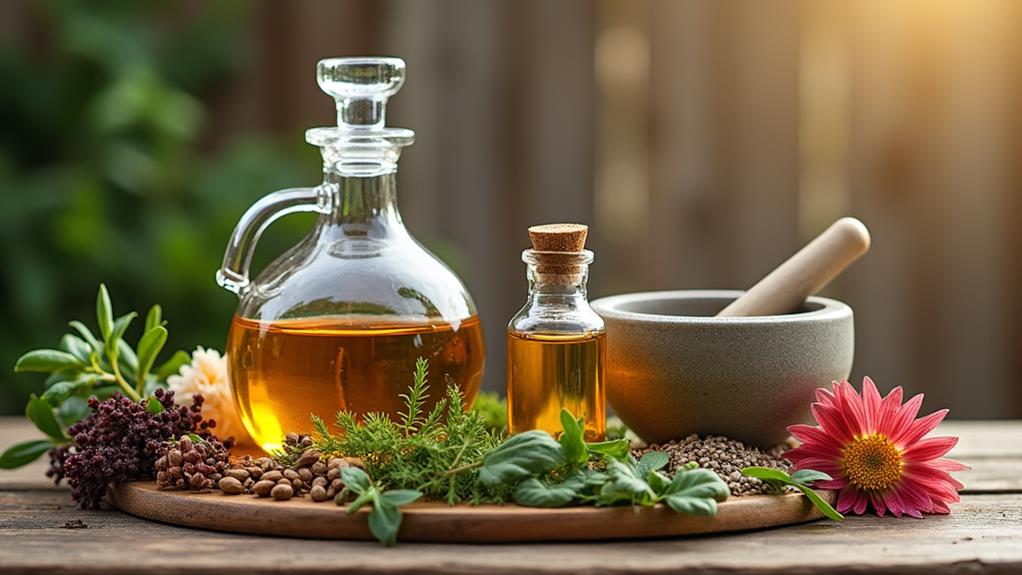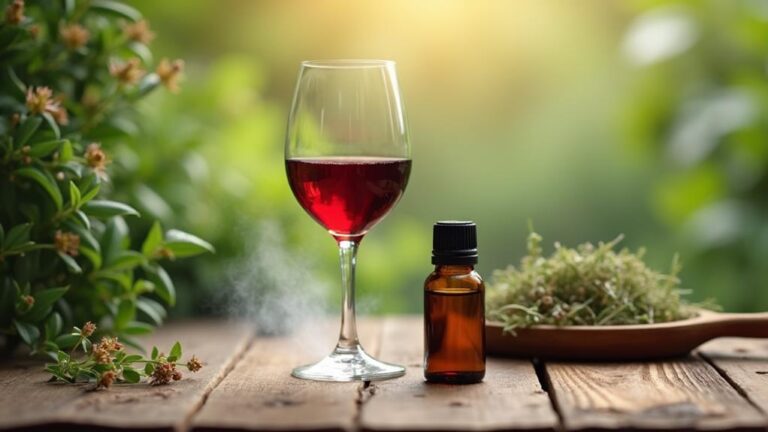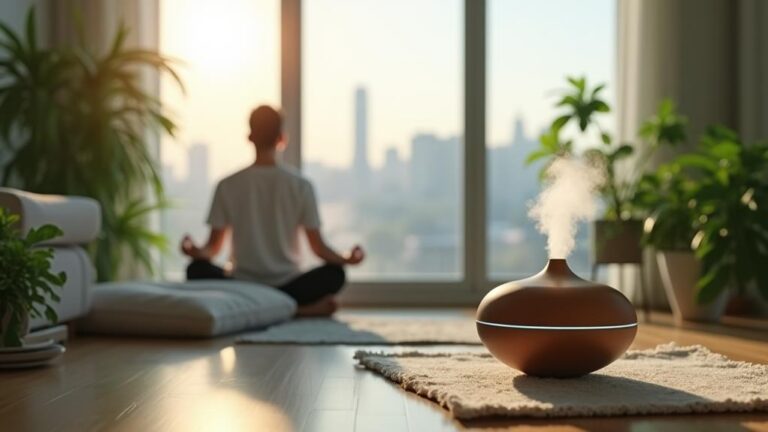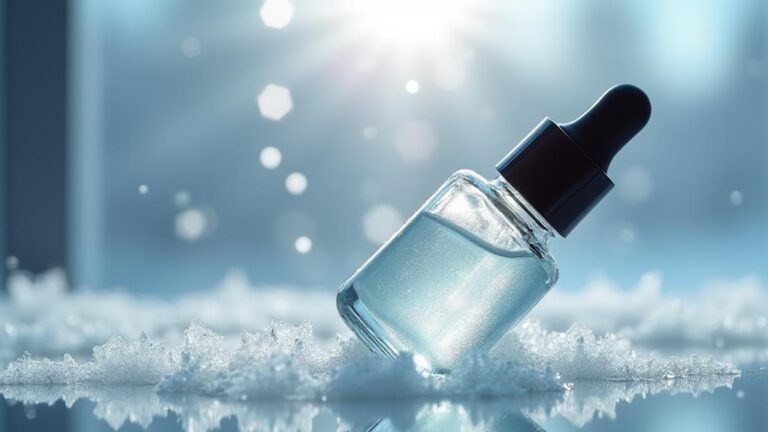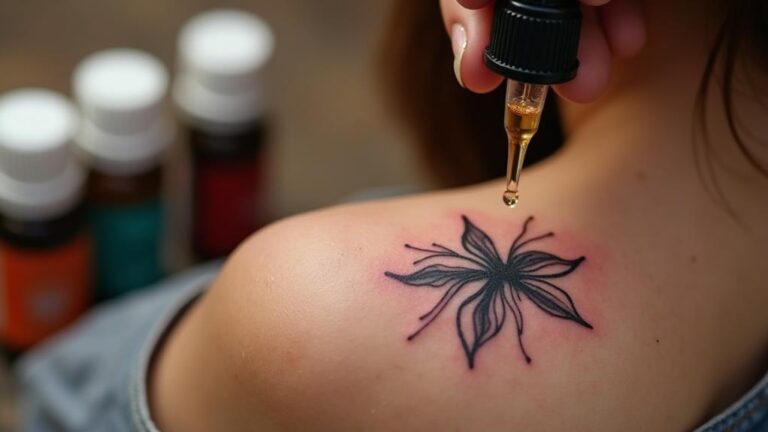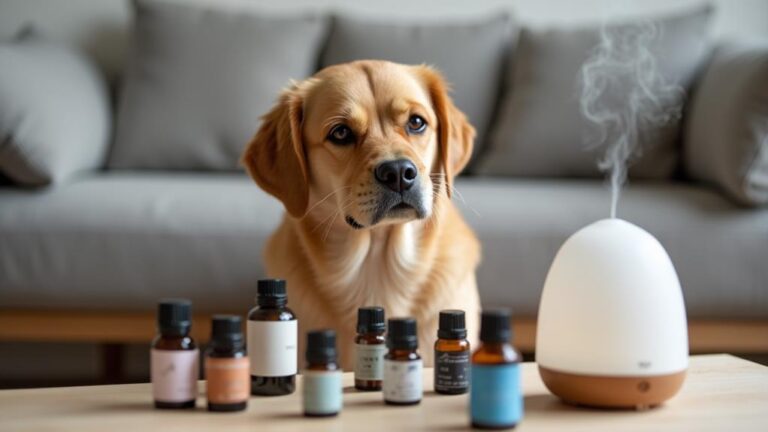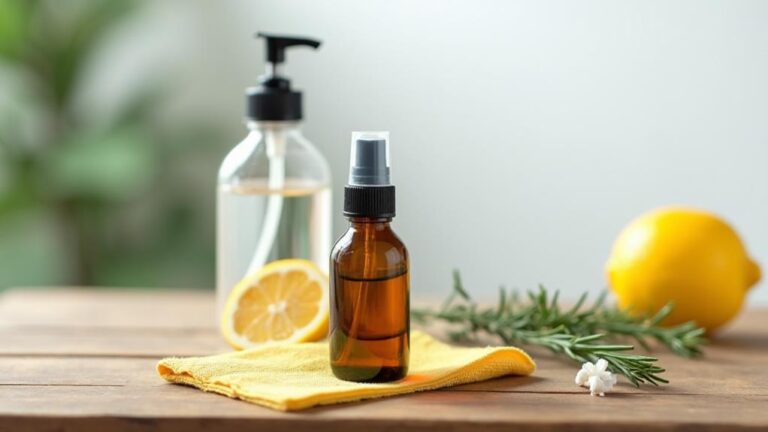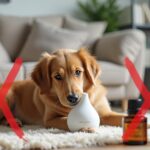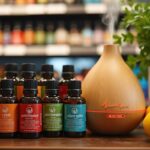As you consider making essential oils at home, you're taking the first step towards revealing the numerous benefits of these natural remedies. You'll start by gathering the necessary materials, but it's vital to guarantee you're using the right equipment and techniques to avoid contamination and achieve the desired results. Choosing the correct plant material and distillation method can be overwhelming, especially for beginners. What if you don't know which plants to use or how to properly set up your distillation equipment? In the following steps, you'll learn how to overcome these challenges and successfully create your own essential oils at home.
Key Takeaways
- Select the right plant material by researching its botanical name and chemical composition for high-quality essential oil production.
- Prepare plant material by cleaning and drying it to remove dirt, debris, and contaminants that may affect the oil quality.
- Choose a suitable distillation method such as steam distillation, solvent extraction, or hydrodistillation based on the plant's chemical composition.
- Use a distillation apparatus and carefully monitor temperature and steam flow to achieve peak extraction of the essential oil.
- Filter the essential oil using a coffee filter or cheesecloth and store it in a dark glass bottle to maintain its therapeutic properties.
Gather Essential Materials
To start making essential oils at home, you'll need some basic equipment and ingredients.
These essential supplies will enable you to extract the essence of your chosen plant material and create high-quality essential oils.
A glass distillation apparatus or a steam distiller is necessary for most essential oil extraction methods.
You'll also need a glass beaker or a measuring cup to measure the plant material and a collecting vessel for the essential oil.
Other necessary equipment includes a thermometer, a separatory funnel, and a pipette or dropper.
Proper storage of your essential supplies is vital to guarantee their quality and longevity.
Store your glass equipment in a clean, dry place, away from direct sunlight and heat sources.
Keep your essential oils in dark glass bottles with tight-fitting lids to protect them from light and air.
Always label your essential oils and supplies with their contents and the date of preparation.
This will help you keep track of your essential oils and guarantee their safe use.
Choose Your Plant Material
Selecting the right plant material is crucial for producing high-quality essential oils at home.
When choosing your plant material, you'll want to ponder a few key factors, including the plant's botanical name, its chemical composition, and its therapeutic properties.
To guarantee you're using the correct plant, brush up on your botany basics and make sure you can accurately identify the plant.
To choose the right plant material for essential oil production, ponder the following:
- *Familiarize yourself with the plant's botanical name and guarantee it matches the desired species*
- *Research the plant's chemical composition to determine if it will produce a high-quality essential oil*
- *Ponder the plant's growing conditions, including climate, soil, and sunlight requirements*
- *Choose plants that are free of pesticides, heavy metals, and other contaminants*
- *Verify the plant's therapeutic properties to guarantee they align with your intended use*
Prepare the Plant Material
You've chosen your plant material and verified its species, chemical composition, and therapeutic properties.
Now, guaranteeing the best possible outcome is crucial to optimize the yield and quality of your essential oil.
Start by cleaning the plant material thoroughly to remove any dirt, debris, or contaminants.
Gently rinse fresh herbs under cold running water, and pat them dry with a clean towel or paper towels to remove excess moisture.
For dried flowers or herbs, inspect them for any signs of mold or fungal growth.
If you notice any, discard the affected material to prevent contamination.
If you're working with delicate flowers, such as rose petals or lavender, you can air-dry them further by spreading them out in a single layer on a paper towel or clean cloth.
This helps to preserve their essential oil content and prevent spoilage.
Once your plant material is clean and dry, you're ready to move on to the next step in the essential oil-making process.
Select a Distillation Method
Your distillation method plays a crucial role in releasing the full potential of your plant material, as it determines the quality and yield of your essential oil.
There are several distillation methods you can use to extract essential oils from your plant material, each with its own advantages and disadvantages.
When choosing a distillation method, consider the type of plant material you're working with, the equipment you have available, and the quality of oil you're trying to produce.
- Steam Distillation: This is a popular method for extracting essential oils from plants with delicate chemical compositions, such as lavender and chamomile. Steam distillation uses steam to release the oil from the plant material.
- Solvent Extraction: This method uses a solvent, such as ethanol or hexane, to extract the essential oil from the plant material. Solvent extraction is often used for plants with low oil yields or for extracting absolutes.
- Hydrodistillation: This method uses a combination of steam and water to extract the essential oil from the plant material.
- Vacuum Distillation: This method uses a vacuum to extract the essential oil from the plant material, resulting in a high-quality oil with a low risk of degradation.
- Cold Pressing: This method is used for citrus fruits, where the oil is extracted from the peel using pressure.
Distill the Essential Oil
To distill the essential oil, you'll need specific equipment to guarantee a safe and successful process.
You'll require a distillation apparatus that includes a heat source, a distillation flask, and a condenser, among other components, which will help you extract the essential oil from your chosen plant material.
Once you have your equipment, you can begin the distillation process, carefully monitoring the temperature and steam flow to achieve peak extraction of the essential oil.
Equipment Needed
Setting up the right equipment is essential for distilling essential oils safely and effectively.
When investing in equipment, consider both safety precautions and budget considerations. It's pivotal to find a balance between quality and affordability to guarantee a successful and enjoyable experience.
You'll need the following equipment to get started:
- A distillation apparatus or still, which includes a condenser, a receiver, and a heating source
- Glass containers or jars with lids for storing your essential oils
- A hydrometer or thermometer to measure temperature and density
- A separator or decanter to separate the essential oil from the hydrosol
- A dark glass bottle with a dropper lid for storing and dispensing your finished essential oil
When selecting your equipment, prioritize safety precautions, such as a heat-resistant and food-grade distillation apparatus, and consider the durability and longevity of the materials.
Budget considerations should also be taken into account, as investing in high-quality equipment may be more cost-effective in the long run.
Distillation Process
Distilling essential oils is a multi-step process that requires patience, attention to detail, and the right equipment. You'll need to set up your distillation apparatus, which typically includes a steam setup, condenser, collection vessel, and vacuum control system. This process helps to release the oil from the plant material, cool and condense the vapor, and separate the oil from the water.
| Step | Description |
|---|---|
| 1. Steam Distillation | Introduce steam into the distillation apparatus to release the essential oil from the plant material. |
| 2. Condensation | Use a condenser to cool the vapor, causing the essential oil to condense and separate from the water. |
| 3. Separation | Use a vacuum control system to separate the essential oil from the water, resulting in a high-quality oil. |
As you distill your essential oil, verifying the temperature, steam flow, and vacuum control is crucial to achieving superior results. Adjust these parameters as needed to achieve the desired quality and yield of your essential oil. By following these steps and using the right equipment, you'll be able to distill high-quality essential oils at home, guaranteeing a premium product.
Separate and Filter Oil
At this pivotal stage in the essential oil-making process, you'll need to carefully separate the oil from the plant material and filter it to achieve the highest quality.
This step is vital in determining the final quality and purity of your essential oil. After the distillation process, allow the mixture to settle and undergo oil sedimentation, where the essential oil separates from the hydrosol and plant particles.
To filter the oil, you'll need to select the right filter paper type for your specific needs.
- Coffee filters or paper towels for a coarse filter
- Filter paper with a pore size of 0.2-0.5 microns for a more precise filter
- Cotton or linen cloth for a gentle, non-chemical filter
- Activated charcoal-impregnated filter paper for removing impurities and odors
- Glass microfiber filter paper for a highly efficient and durable filter
Choose a filter paper type that suits your essential oil's properties and intended use. Gently pour the mixture into the filter, allowing it to slowly pass through and separate the oil from any remaining impurities.
Store Your Essential Oil
You've successfully separated and filtered your essential oil, now it's time to think about how you'll store it to preserve its therapeutic properties and shelf life.
Proper storage is vital to maintaining the quality and potency of your essential oil.
Choose oil containers that are specifically designed for storing essential oils.
These containers should be made of dark glass, as light can cause the oil to degrade.
Dark glass oil containers will help protect your essential oil from UV rays, which can damage the molecular structure of the oil.
Store your essential oil in a cool, dry place, away from direct sunlight and heat sources.
Dark storage is ideal, as it will help maintain the oil's therapeutic properties.
Avoid storing essential oils near windows, ovens, or heaters.
Label your oil containers with the date, the type of plant used, and the method of extraction.
This will help you keep track of your essential oils and guarantee you're using the freshest oil.
Frequently Asked Questions
Can I Make Essential Oils From Dried Plants?
You can make essential oils from dried plants, but the quality of the dried herb greatly impacts the oil's potency and aroma, so achieving the best outcome requires starting with high-quality, properly dried plant material for peak results.
Are Homemade Essential Oils Safe for Skin Use?
Just like a chef guarantees each ingredient is safe for consumption, you must verify the quality of your homemade essential oils before applying them to your skin, considering skin sensitivity and quality control.
How Long Do Homemade Essential Oils Last?
When you make your own essential oils, their shelf life largely depends on your storage methods. You'll typically get 1-3 years of potency if you store them in dark, airtight glass containers and keep them cool.
Can I Distill Multiple Plants at Once?
When distilling multiple plants together, you're using batch distillation or simultaneous extraction. This process can be beneficial for creating complex blends, but be cautious, as it can also lead to unpredictable oil profiles and potential contamination.
Are Essential Oil-Making Kits Worth the Investment?
When considering essential oil-making kits, you'll weigh kit options and cost comparisons carefully. Investing in a high-quality kit can save you time and money in the long run, ensuring you extract oils safely and effectively.
Conclusion
As you walk through the garden of knowledge, harvesting the fruits of your labor, remember that creating essential oils at home is a journey of self-discovery and growth. With each carefully crafted bottle, you're cultivating a deeper connection with nature and yourself. Just as a seedling requires nurturing, your essential oils require patience, care, and attention to flourish – a reflection of the love and intention you invest in their creation.


